Air Quality Across Different Brussels Metro Stations

With its intricate network of metro stations, Brussels serves as a crucial artery for daily commuters and tourists alike.
The quality of air within these subterranean hubs remains a pressing concern. In this blog post, we dive deeper into the air quality across various metro stations in Brussels, focusing on the concentrations of PM2.5 and PM10—two of the most harmful pollutants to human health.
The vacuum effect
Particulate matter comprises of a set of particles with a divergent composition that can be found either in solid, suspension, or fluid states in the atmosphere. These particles are also known as aerosols and are often categorized based on their aerodynamic diameter.
PM10 is the fraction of particles with a diameter of less than 10 µm, PM2.5 is the fraction with a diameter of less than 2.5 µm, also PM1, PM0.1 and PM4 are studied by researchers.
PM2.5 and PM10 in metro systems originates from various sources. Friction between train wheels and rails generates PM10, especially during braking, while electric sparks from systems like contacts and overhead wires can produce PM2.5 .The vacuum effect from trains in tunnels draws in outdoor air and particles, increasing both PM2.5 and PM10 levels inside. Construction, maintenance activities and human movement with dust also contribute to indoor PM levels.
The Brussels metro, with its 4 lines and 69 stations, serves a significant portion of the city and surrounding areas. Public transportation is heavily utilized, with the average person spending around 20 minutes on the metro for one-way trip.
Periodical Indoor Air Quality Assessments
Airscan conducts periodical assessments of indoor air quality in the metro, focusing on PM2.5 and PM10 levels. On July 1 of 2024, the Airscan team evaluated air quality at six different stations on the first metro line: Etangs Noirs, Sainte-Catherine, Parc, Gare Centrale, Schuman, and Merode.

WHO Air Quality Guidelines
As it was mentioned in the beginning, PM2.5 and PM10 as pollutants can cause serious health problems, what makes them needed to be regulated. The World Health Organization (WHO) included both different sizes of particulate matter into air quality guidelines (AQGs) in 2005 (see Table 1). Later, in 2021, the threshold was tightened based on latest scientific evidence showing the harm to the population health.

Dominance of Coarse Particles
The following chart shows us PM2.5 and PM10 concentrations averaged over 1 hour at 6 metro stations of Brussels. The represented data clearly exhibits a significant difference between PM2.5 and PM10. The average calculated concentration ratio between PM2.5 and PM10 was 1.6, which clearly indicates a dominance of the coarse particles present in the air of the metro stations.
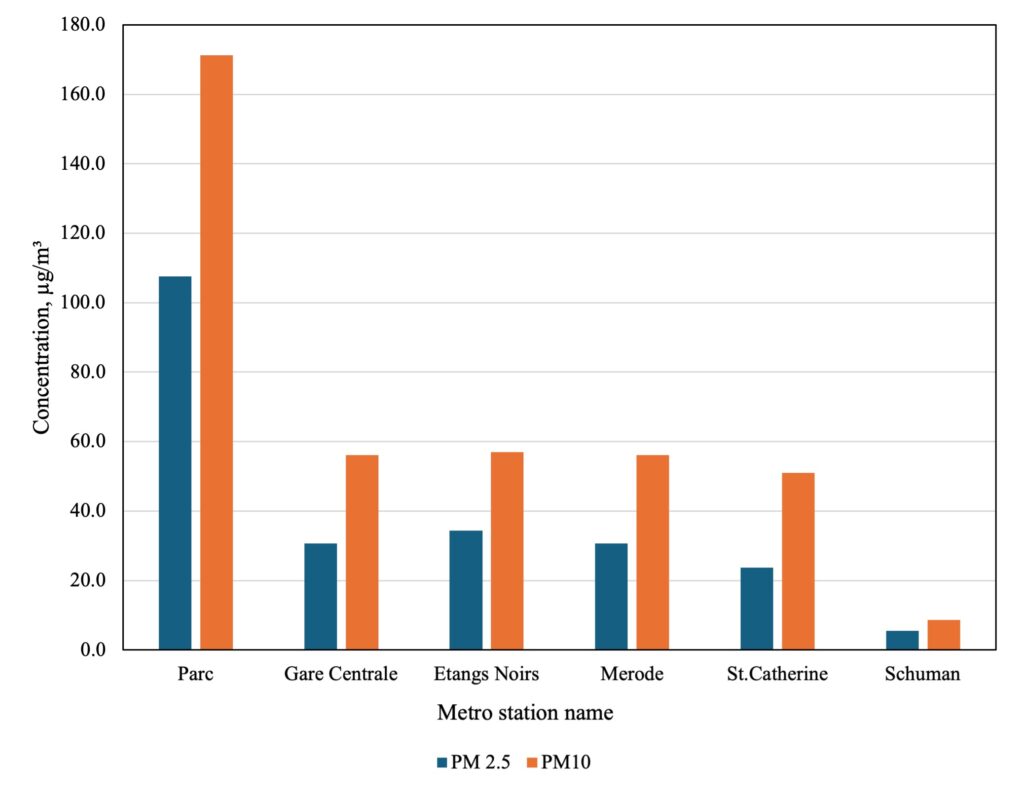
Concentration of PM2.5 and PM10
The changes of PM2.5 concentration at the considered metro stations are showed in Figure 4. The measurements were done for 1 hour from 15:30 to 16:30, respectively. It is worthy to notice that 4 out 5 investigated stations exceed WHO 2021 threshold of 15 µg/m³ for 24-hours limit. It has been reported that, the main sources of this pollutant are due to brake and wheel wear during its interaction with the tracks.
Moreover, the source of PM2.5 can also be external where a poor ventilation system can contribute to the accumulation of particulate matter. PM10, originating from different sources than PM2.5, is often associated with construction sites or airborne dust.
Figure 5 highlights Parc metro station with the highest PM10 levels, largely due to ongoing intensive construction activities. These construction efforts significantly influence the recorded measurements. However, similar to PM2.5, PM10 concentrations exceed the WHO 2021 threshold of 45 µg/m³ for the 24-hour limit at all metro stations except Schuman.
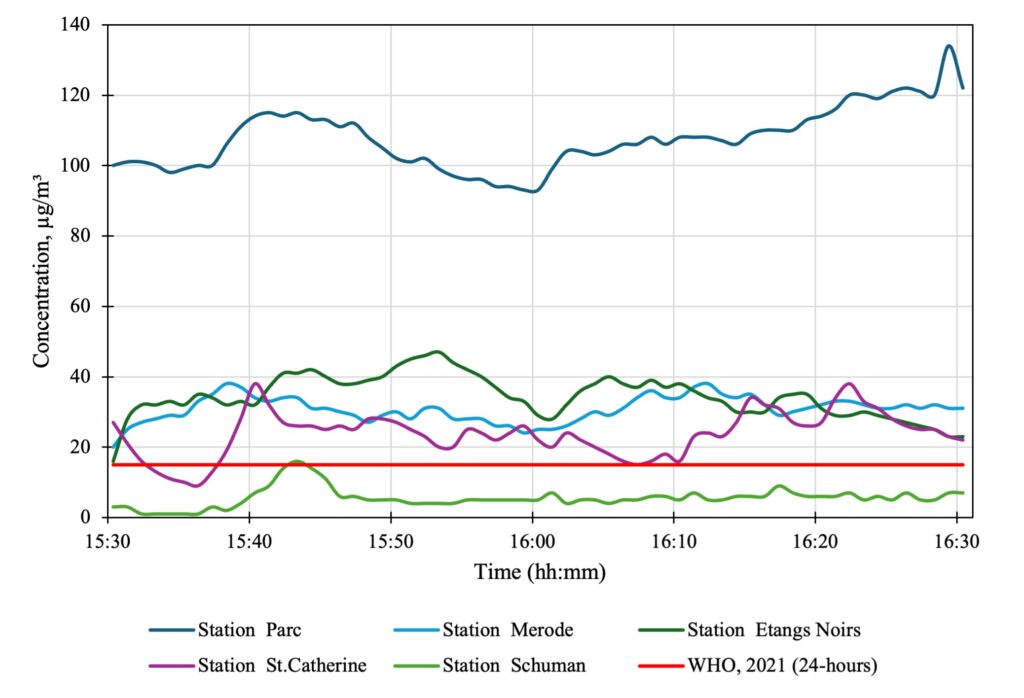
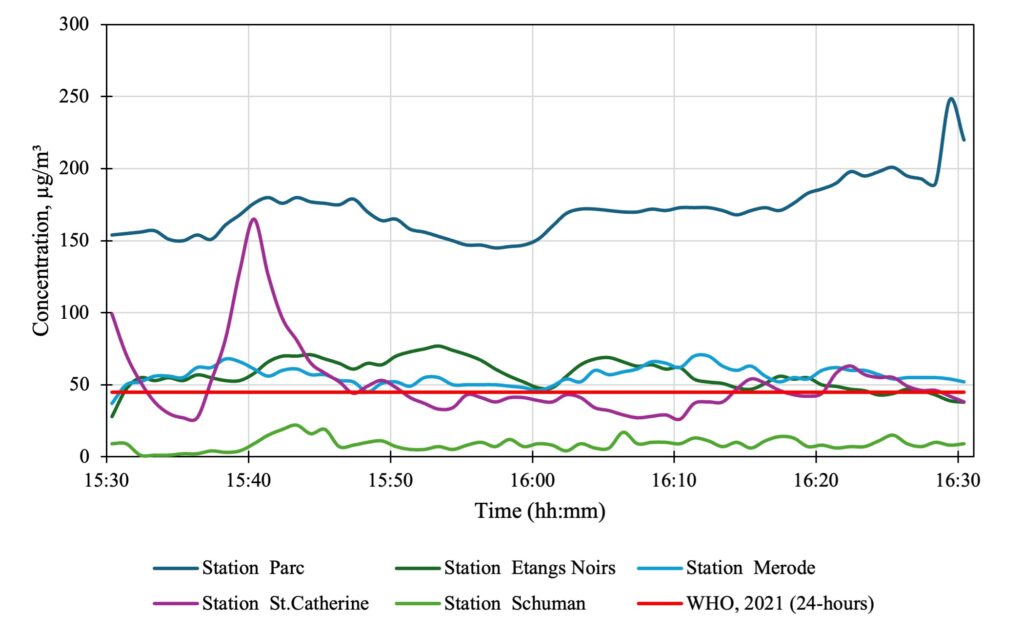
Comparison of PM2.5 and PM10 of outdoor and indoor air quality at Gare Centrale metro station, Brussels
To better understand the difference between outdoor and indoor air quality and their impact on each other, Airscan has also conducted an analysis in Gare Centrale metro station for two determined parameters: PM2.5 and PM 10.
Figures 6 and 7 show that particulate matter concentrations at Gare Centrale metro station are significantly higher indoors than outdoors. This is likely due to ongoing construction work and poor ventilation at the station during the analysed period.
Additionally, outdoor air covers a larger area, allowing for wider distribution of particles influenced by wind and others meteorological factors, which are not considered in indoor air quality assessments.
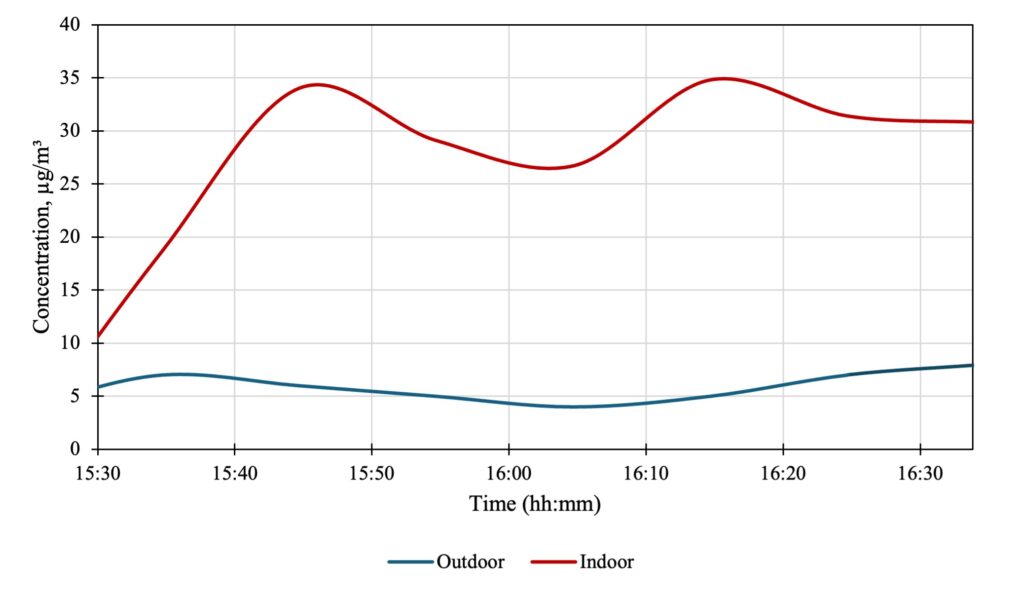
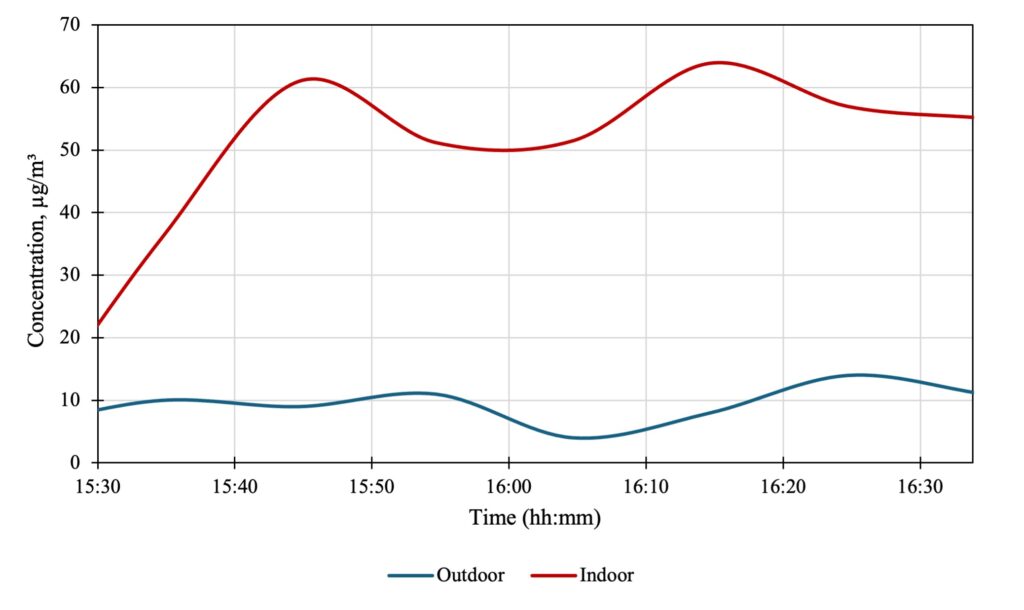
Conclusion
The Airscan team conducted a study to analyse indoor air quality in metro stations, evaluate the results, identify potential emission sources, and assess health risks for the population of Brussels.
The study found that almost all metro stations exceeded the WHO 2021 thresholds for both PM2.5 and PM10. Contributing factors included construction work and increased train traffic, especially during peak hours. However, Schuman station stayed within WHO 2021 limits due to recent renovations and additional exits that improved air exchange.
The comparison of indoor and outdoor air quality at Gare Centrale showed that such comparisons are challenging due to significantly different conditions affecting each environment.
Reducing particulate matter (PM) exposure in metro stations involves a mix of engineering upgrades, operational practices, administrative actions, and personal precautions:
- Enhance the ventilation system to bring in more fresh air and expel polluted air effectively.
- Regularly clean trains and use brakes that emit fewer pollutants.
- Establish strict cleaning schedules with vacuum systems to prevent dust from circulating.
- Install monitoring systems to track PM levels and identify sources of pollution, regularly reviewing data to improve air quality management.
- Provide masks and promote mobile apps for real-time updates on air quality.
Latest Articles

School air quality: protect children today | Airscan
Children are more vulnerable to air pollution at school. Key Brussels data, effective measures (school streets, LEZ), and Airscan solutions: monitoring, smart ventilation, certification‑ready reporting.

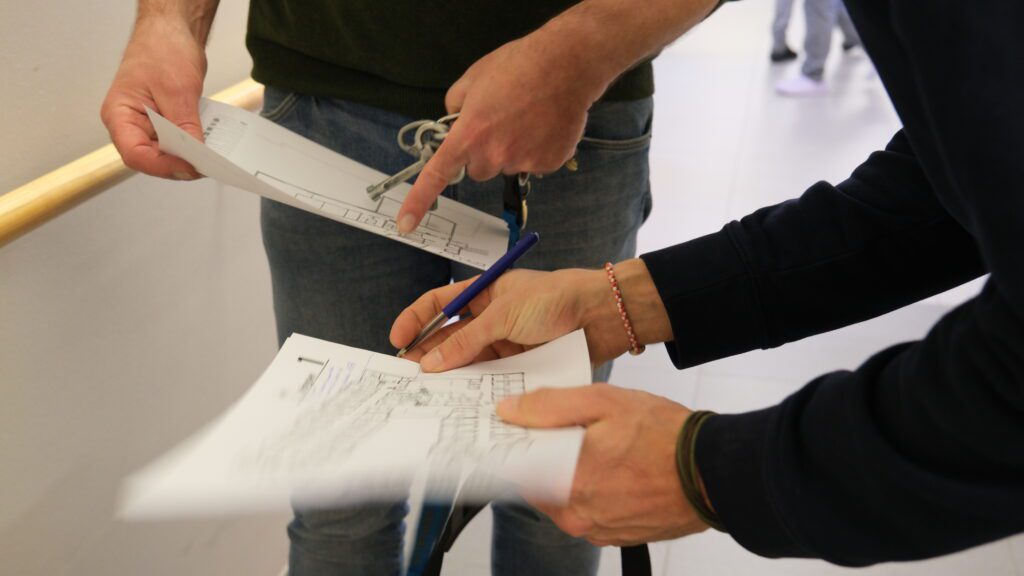
Ventilation Audits in Flanders Care Homes: Airscan’s 40‑Site Study on Indoor Air Quality
Airscan’s audit of 40 Flemish care homes uncovered critical ventilation issues: nearly 1 in 4 rooms exceeded safe CO₂ limits. With VEB and VIPA support, the study offers data-driven solutions to protect residents’ health.
